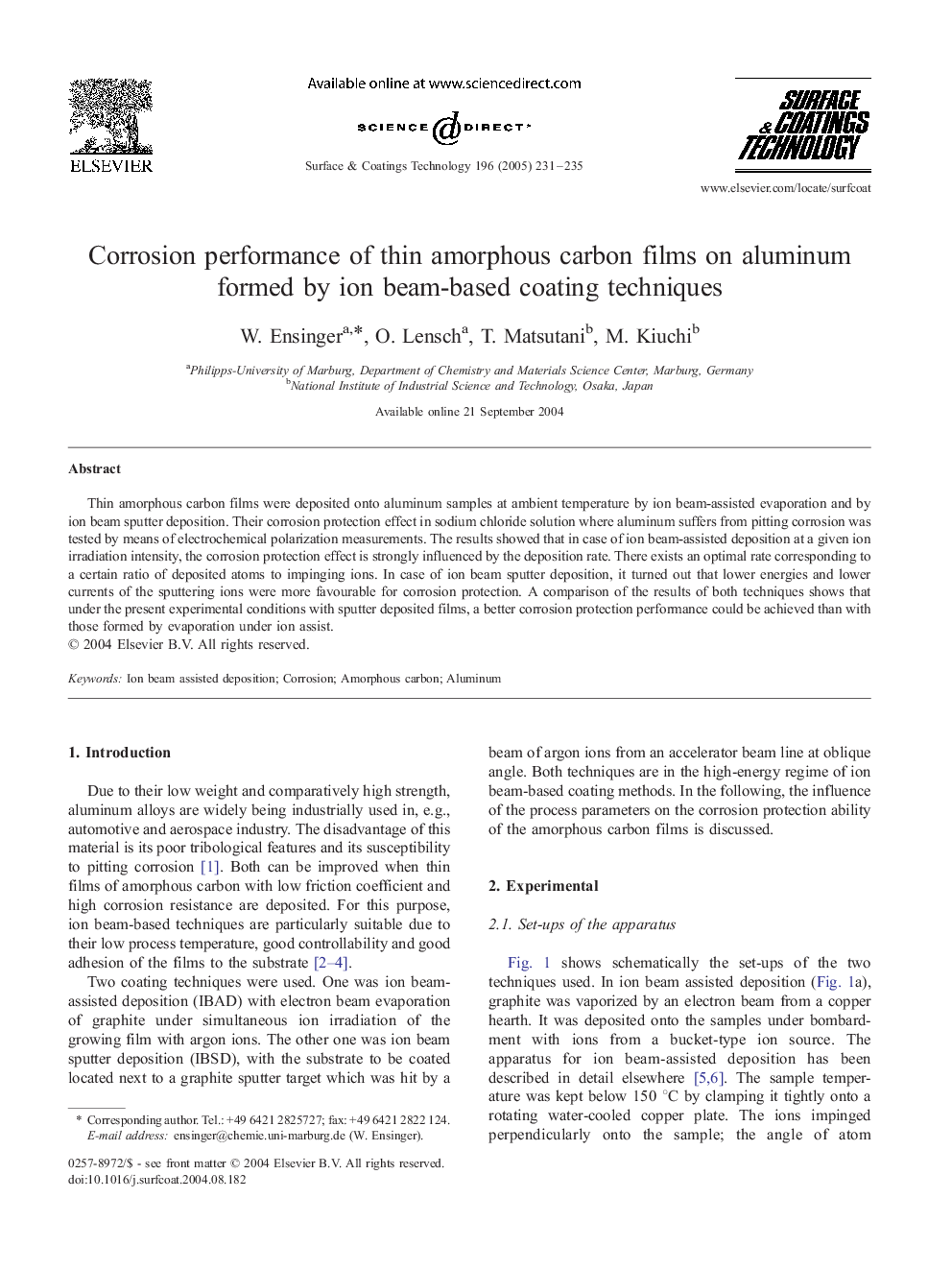| Article ID | Journal | Published Year | Pages | File Type |
|---|---|---|---|---|
| 9809700 | Surface and Coatings Technology | 2005 | 5 Pages |
Abstract
Thin amorphous carbon films were deposited onto aluminum samples at ambient temperature by ion beam-assisted evaporation and by ion beam sputter deposition. Their corrosion protection effect in sodium chloride solution where aluminum suffers from pitting corrosion was tested by means of electrochemical polarization measurements. The results showed that in case of ion beam-assisted deposition at a given ion irradiation intensity, the corrosion protection effect is strongly influenced by the deposition rate. There exists an optimal rate corresponding to a certain ratio of deposited atoms to impinging ions. In case of ion beam sputter deposition, it turned out that lower energies and lower currents of the sputtering ions were more favourable for corrosion protection. A comparison of the results of both techniques shows that under the present experimental conditions with sputter deposited films, a better corrosion protection performance could be achieved than with those formed by evaporation under ion assist.
Related Topics
Physical Sciences and Engineering
Materials Science
Nanotechnology
Authors
W. Ensinger, O. Lensch, T. Matsutani, M. Kiuchi,
